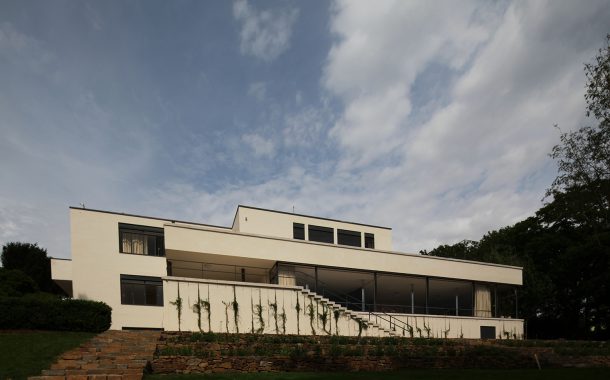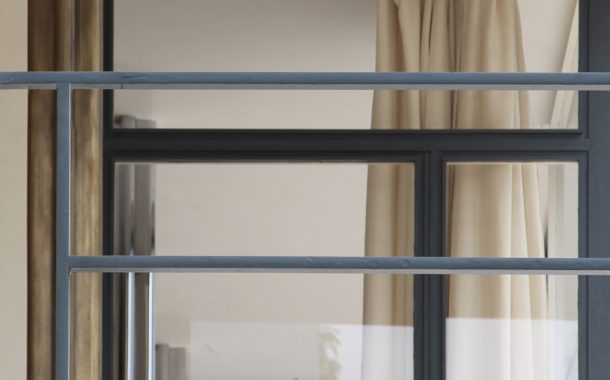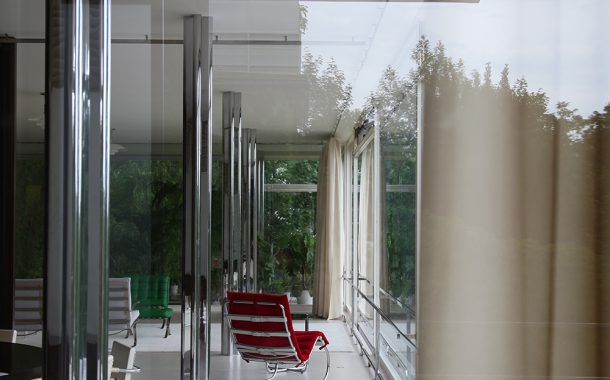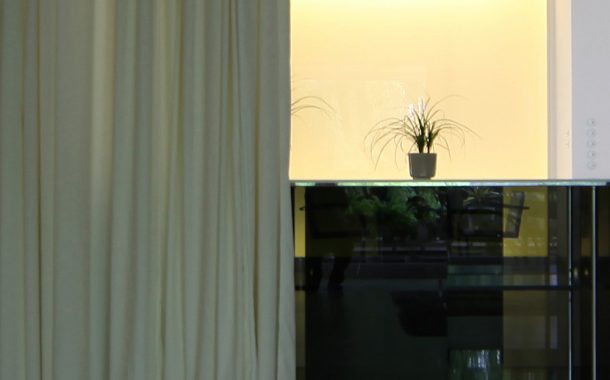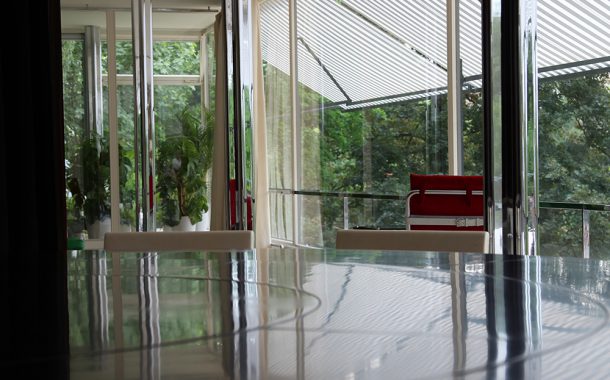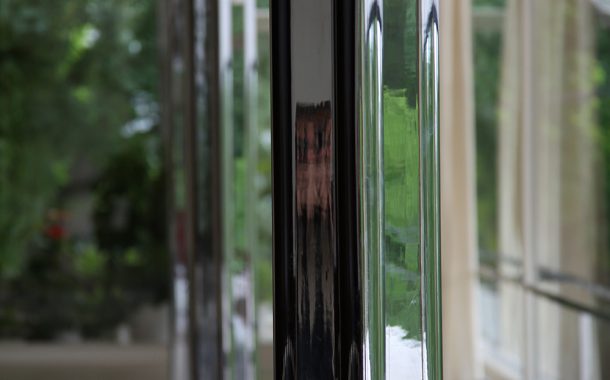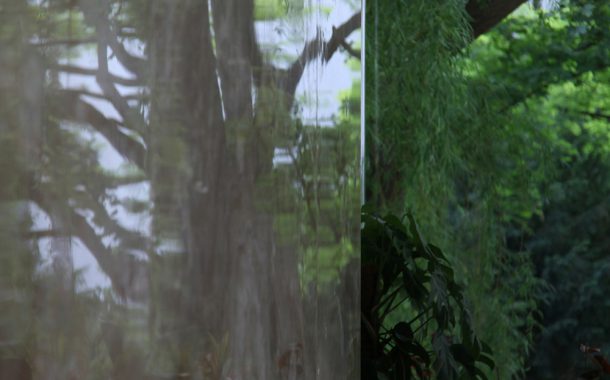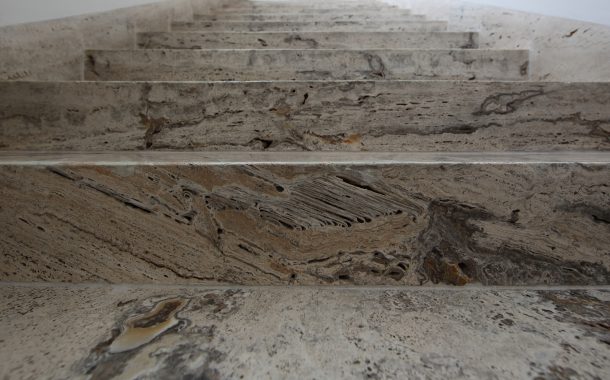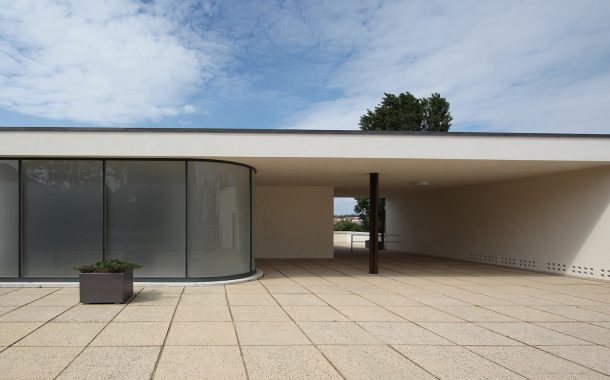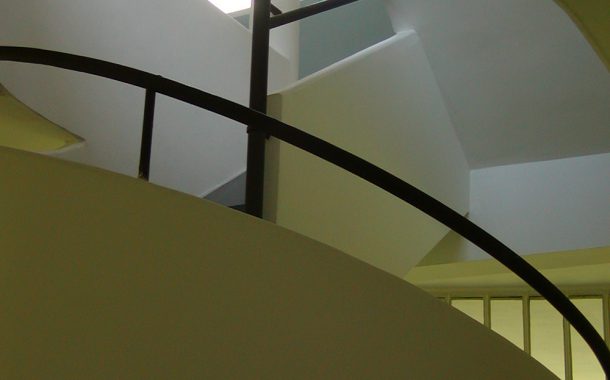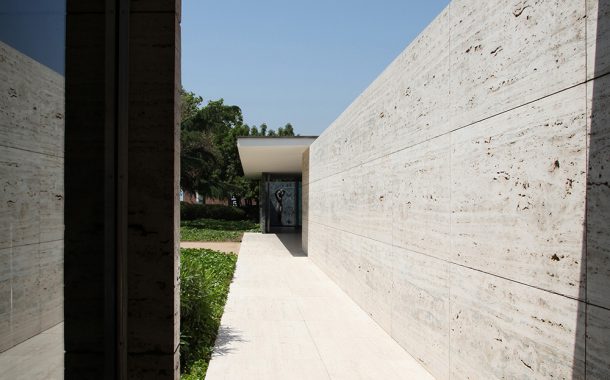Mies van der Rohe’s Villa Tugendhat in Brno, Czech Republic
by updates@lform.com
 The work of Mies van der Rohe is often viewed as being exercises in purist geometry, dry and mathematical. The work of Mies van der Rohe is often viewed as being exercises in purist geometry, dry and mathematical. A May 2012 visit to newly restored Villa Tugendhat in Brno, Czech Republic, most easily recognized from its west façade (image 1) with its precise and controlled layering, as seen in Mondrian paintings (image 2), Mies’ European work is also deeply involved with the transparency, reflectivity and ambiguity of Moholy-Nagy. (image 3, 4, 5, 6,7) This is in addition to the unmistakable concern with the architecture of material and construction (Materiality) (image 8) which has been discussed with clarity and detail by Professor Ivo Hammer in several articles; or the effect of the understated entry (image 9) that begins the experiential drama resolving in the remarkable public spaces. Since the 1970’s and before, there have been efforts in architectural and social criticism to discredit Modernism as simplistic and bland, cold and antihuman. Experiencing Villa Tugendhat, as well as Modern icons such as Villa Savoye (image 10) and the Barcelona Pavilion (image 11) totally contradicts these claims.
The work of Mies van der Rohe is often viewed as being exercises in purist geometry, dry and mathematical. The work of Mies van der Rohe is often viewed as being exercises in purist geometry, dry and mathematical. A May 2012 visit to newly restored Villa Tugendhat in Brno, Czech Republic, most easily recognized from its west façade (image 1) with its precise and controlled layering, as seen in Mondrian paintings (image 2), Mies’ European work is also deeply involved with the transparency, reflectivity and ambiguity of Moholy-Nagy. (image 3, 4, 5, 6,7) This is in addition to the unmistakable concern with the architecture of material and construction (Materiality) (image 8) which has been discussed with clarity and detail by Professor Ivo Hammer in several articles; or the effect of the understated entry (image 9) that begins the experiential drama resolving in the remarkable public spaces. Since the 1970’s and before, there have been efforts in architectural and social criticism to discredit Modernism as simplistic and bland, cold and antihuman. Experiencing Villa Tugendhat, as well as Modern icons such as Villa Savoye (image 10) and the Barcelona Pavilion (image 11) totally contradicts these claims.
